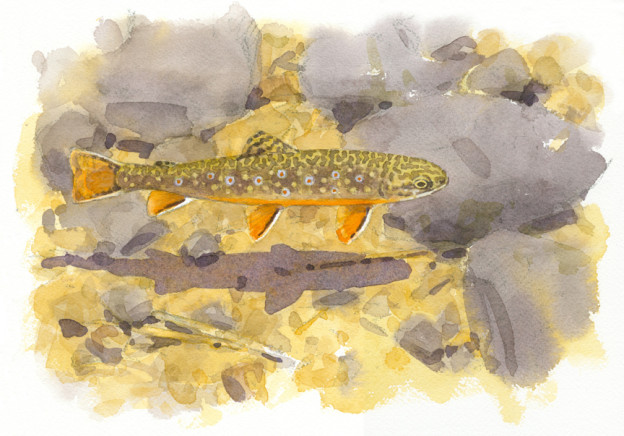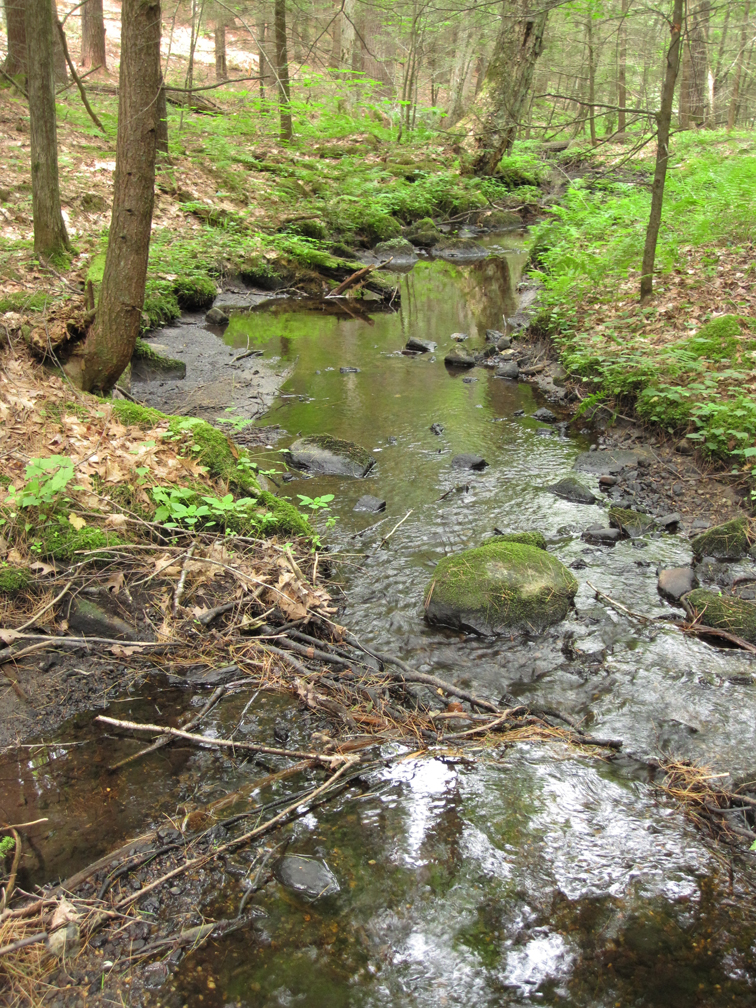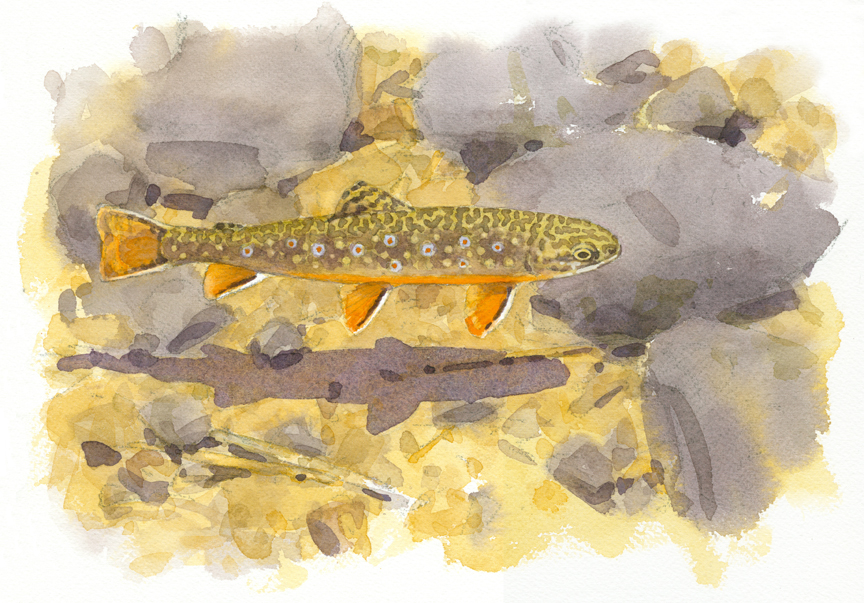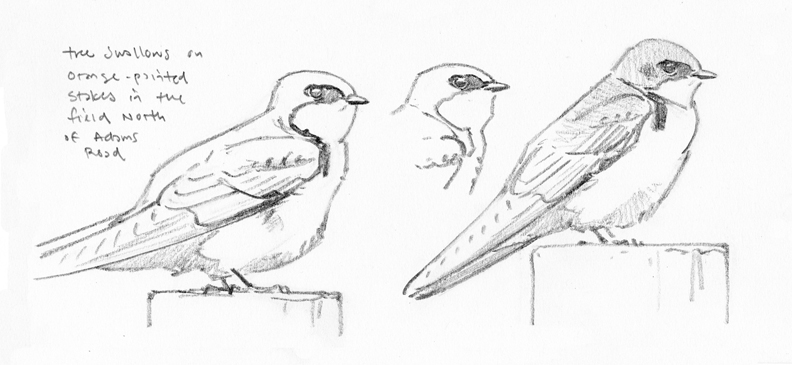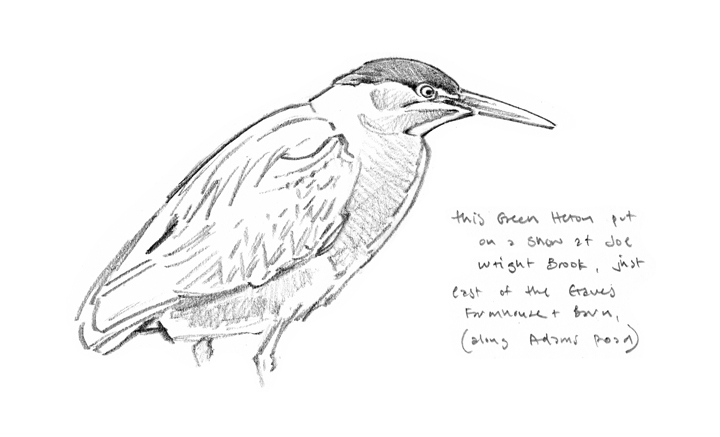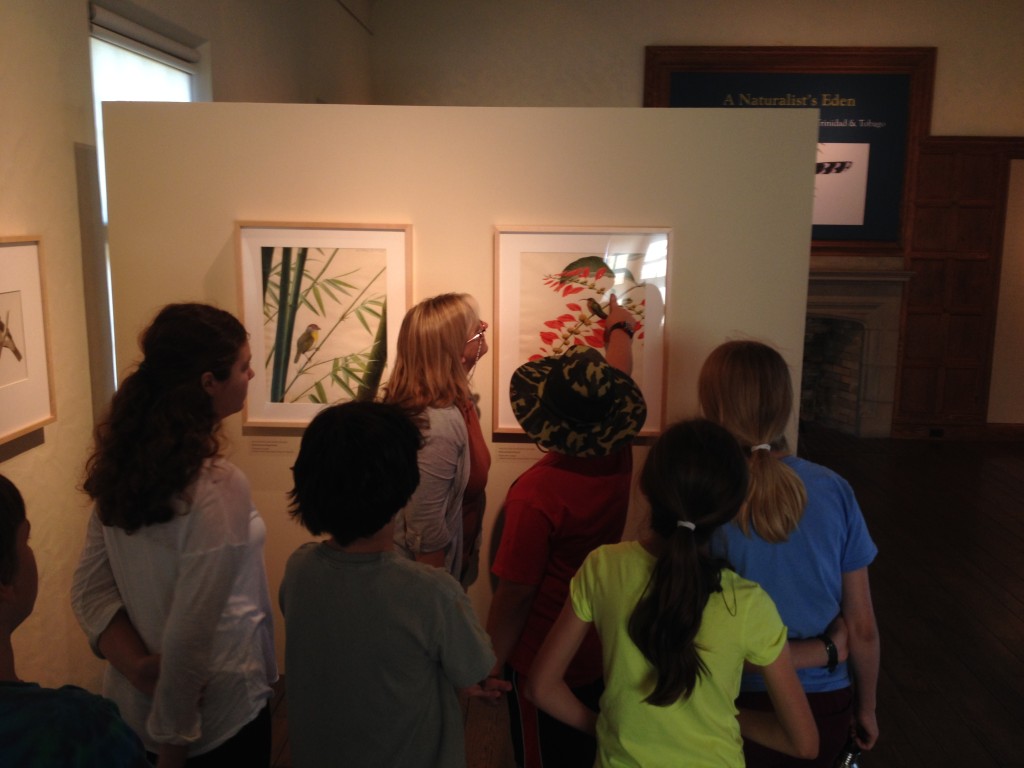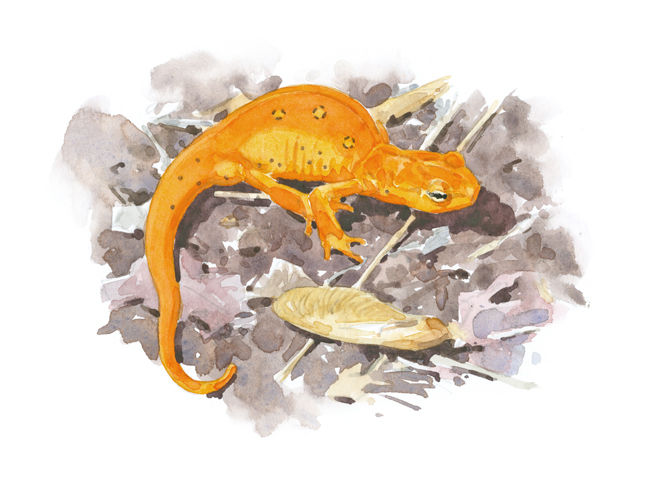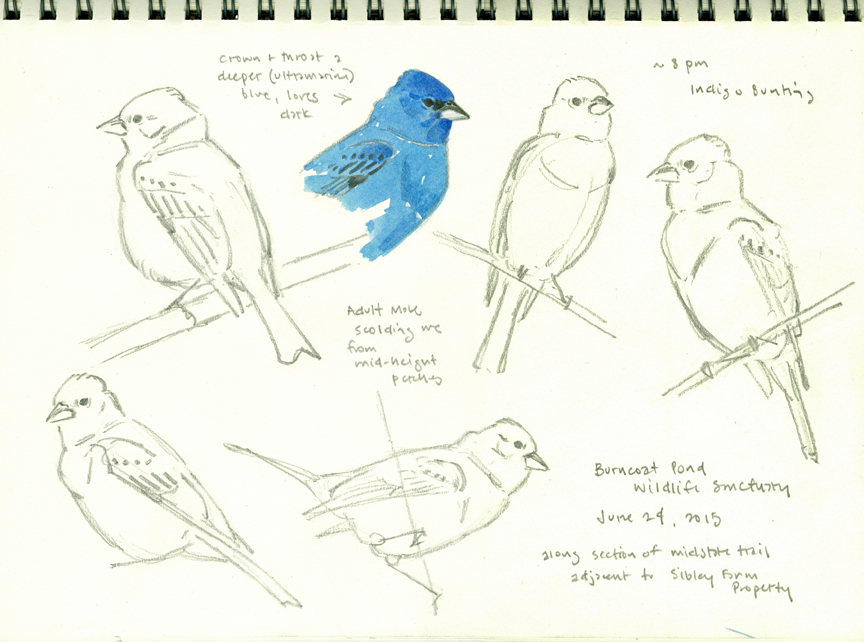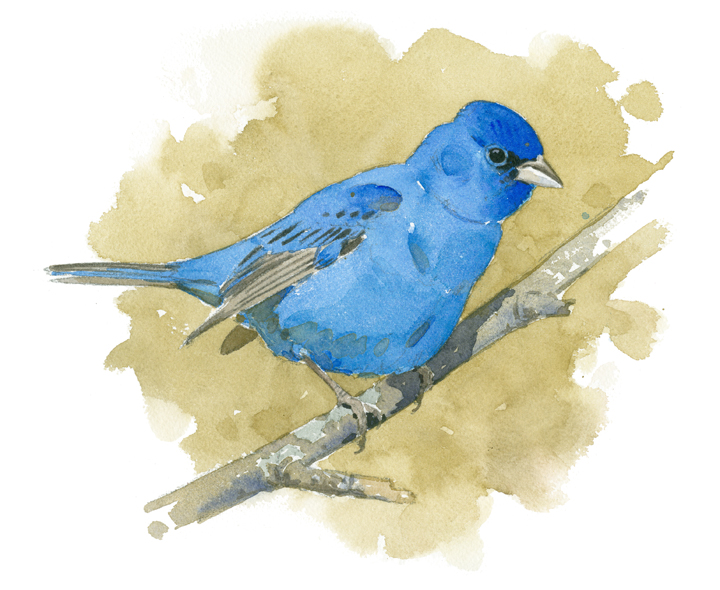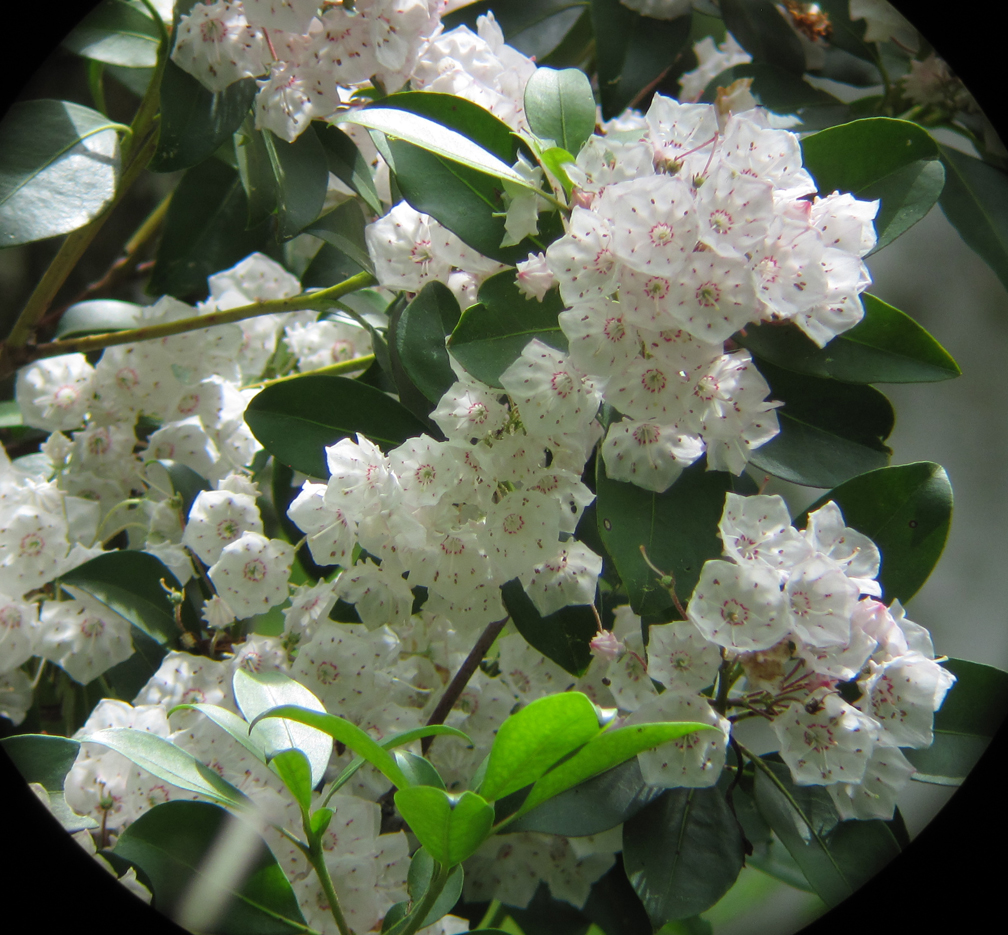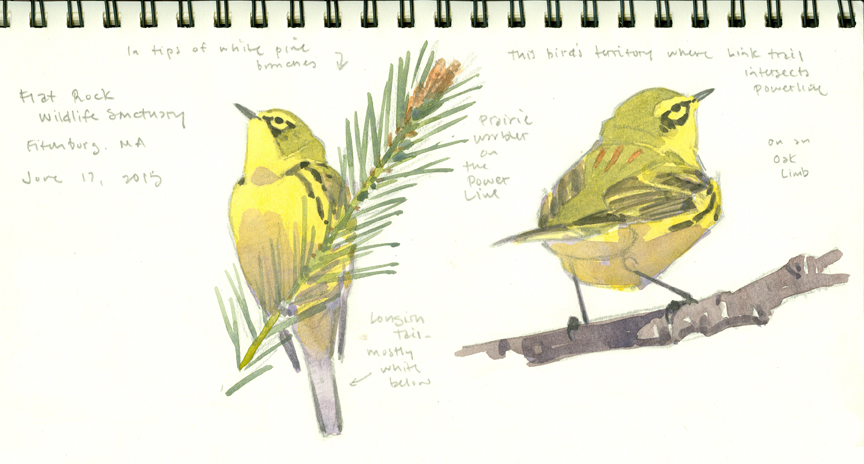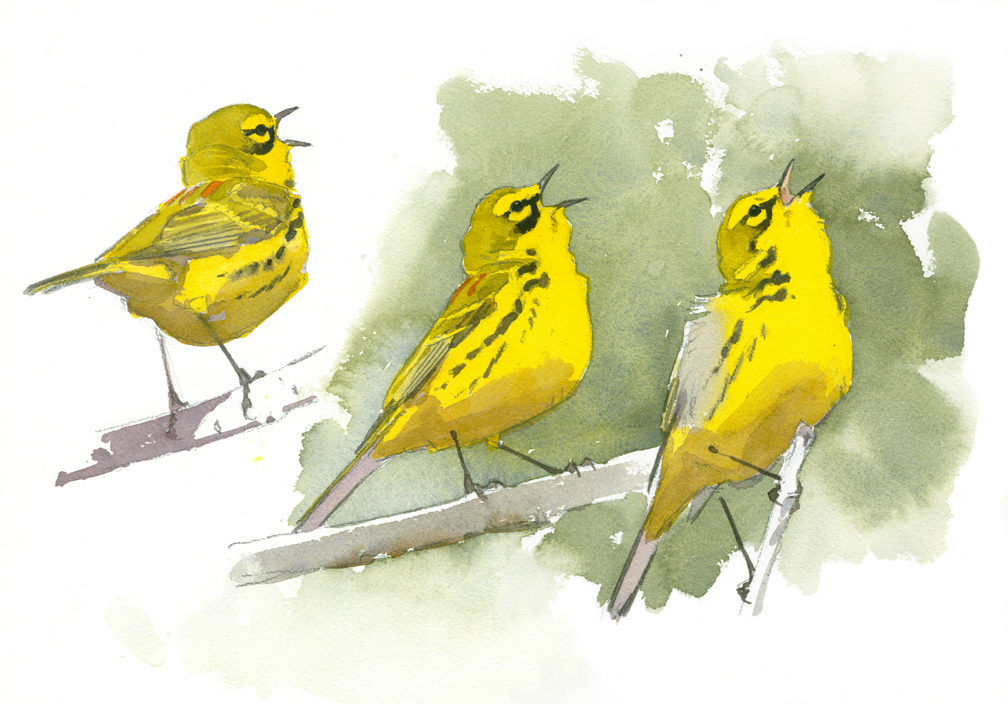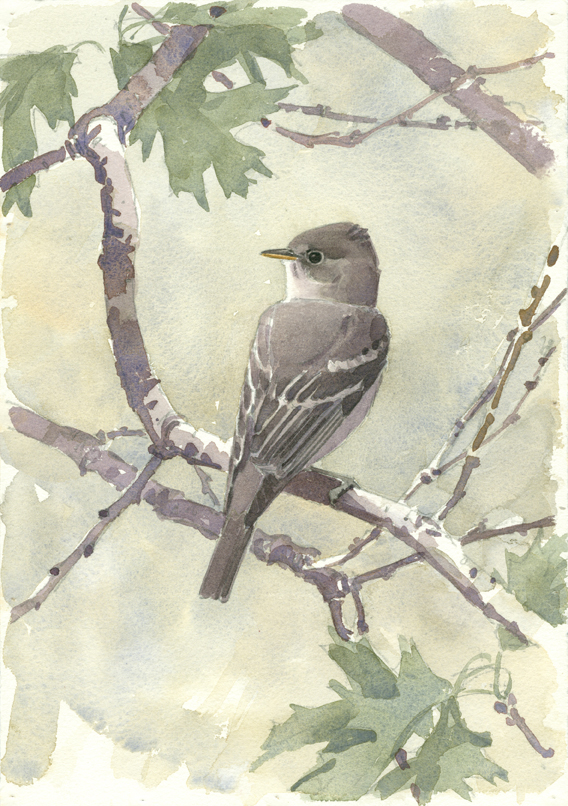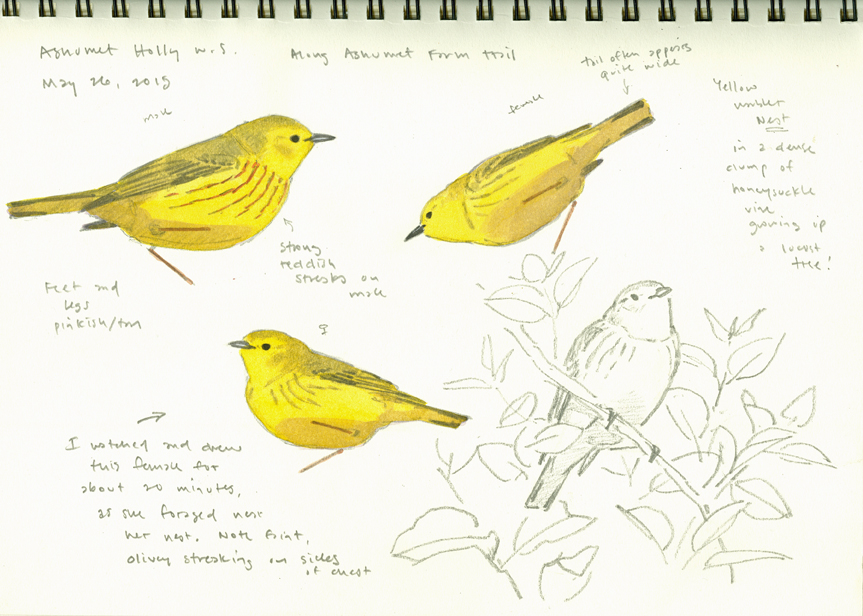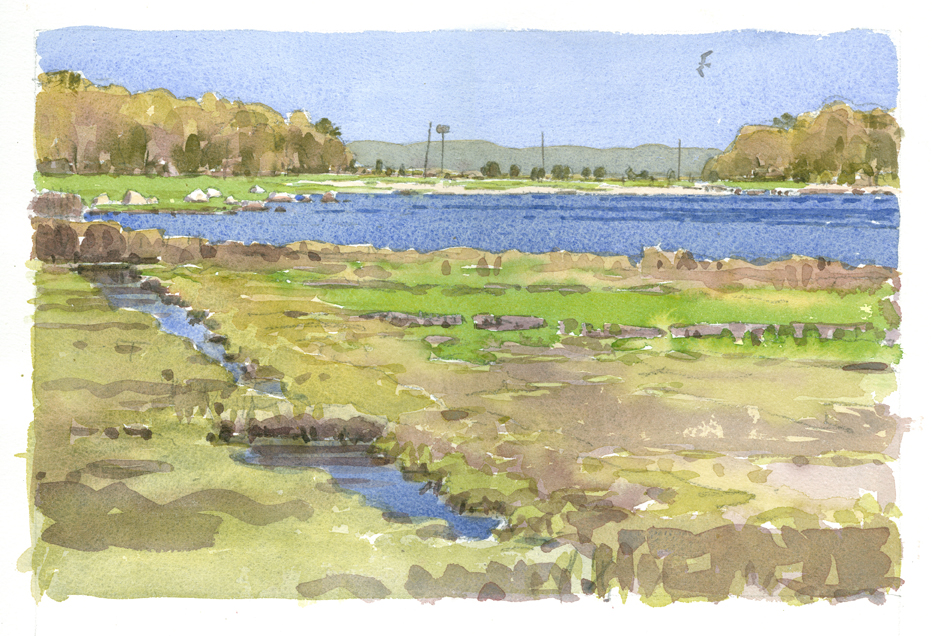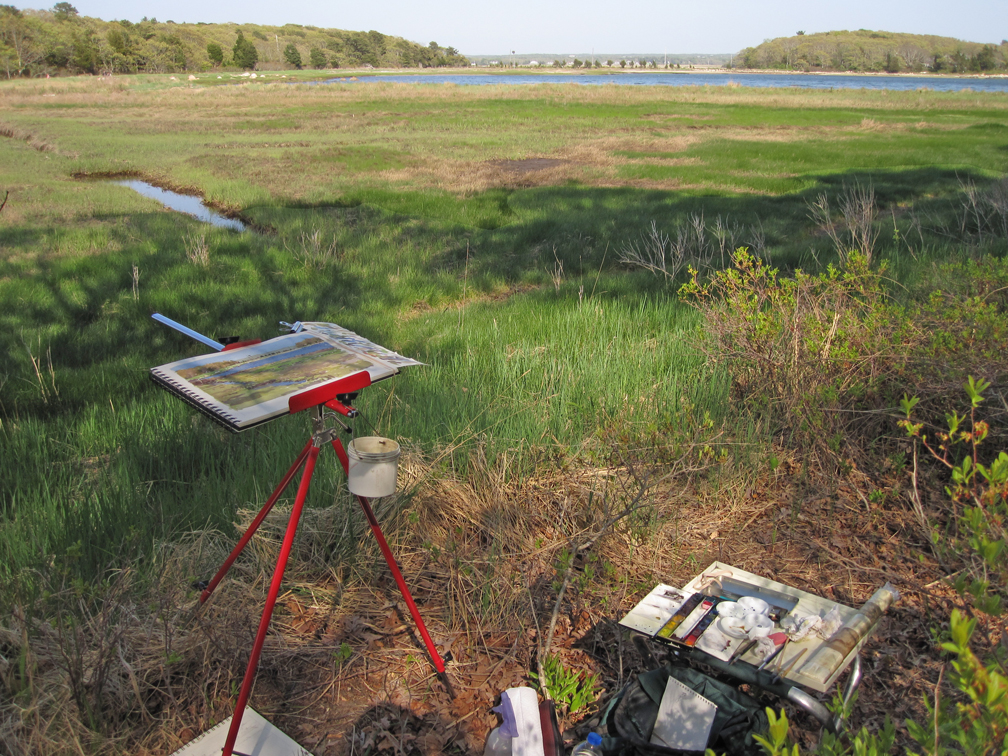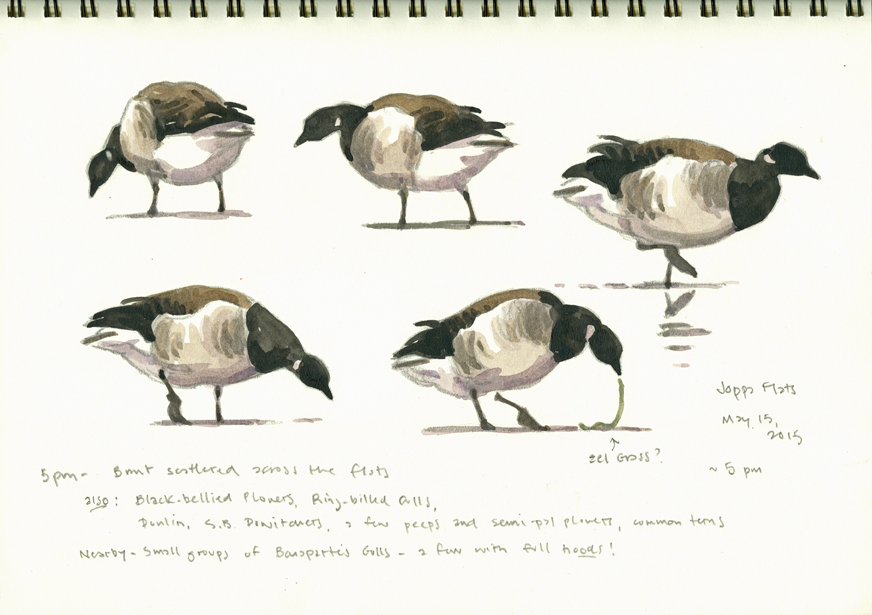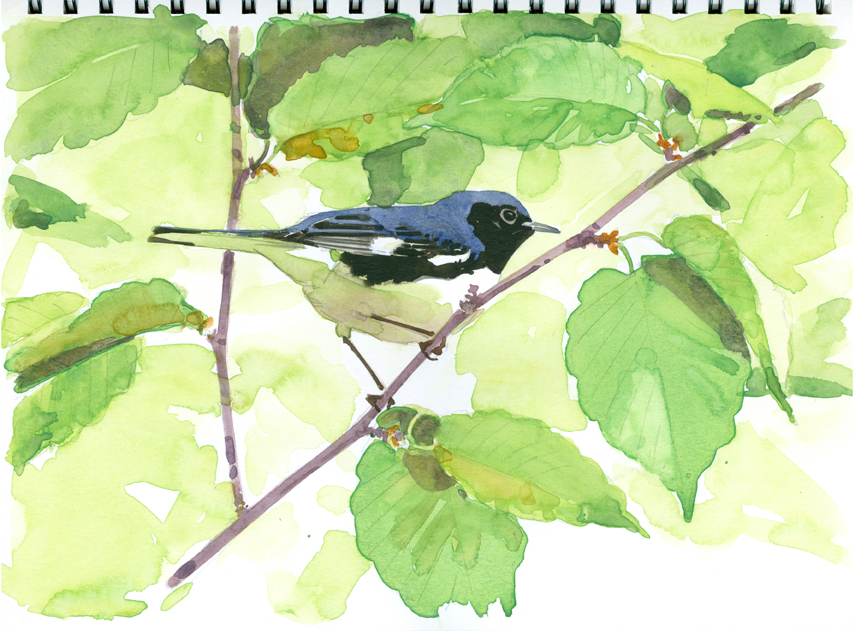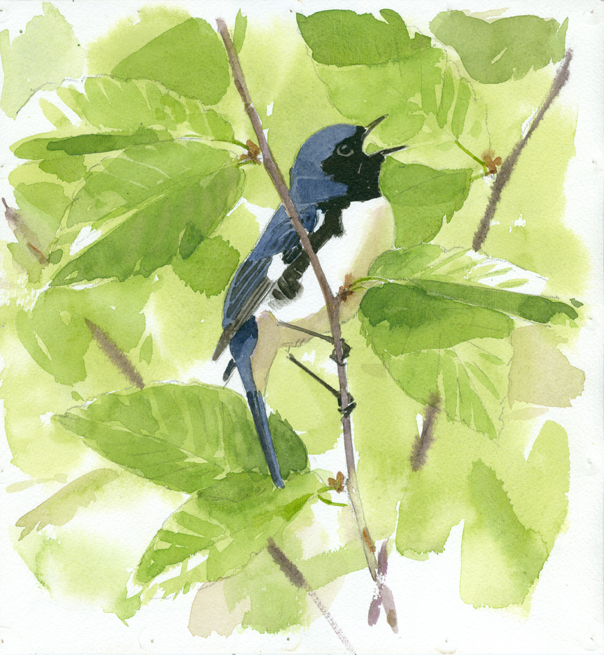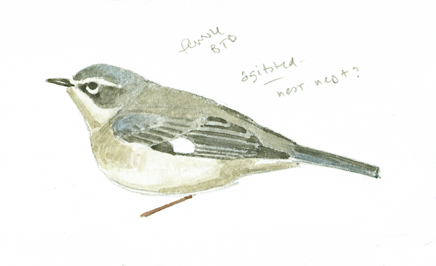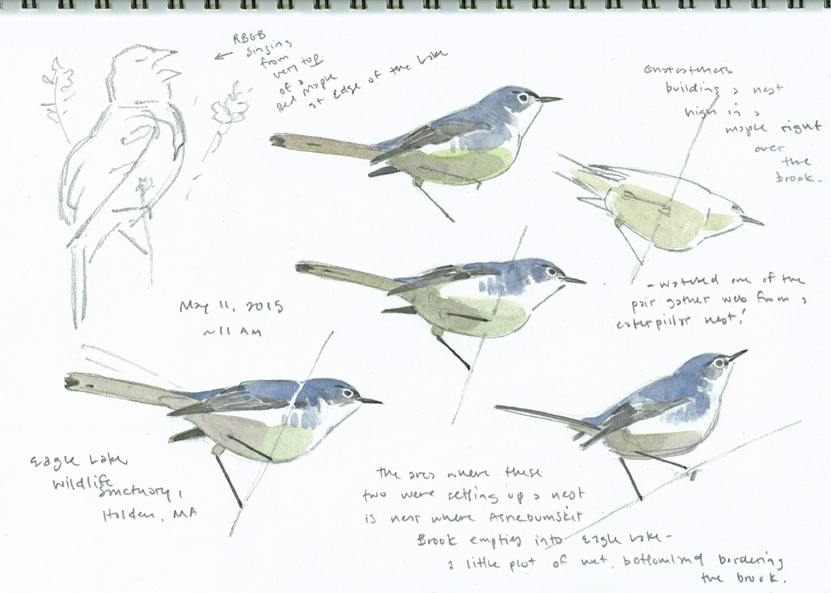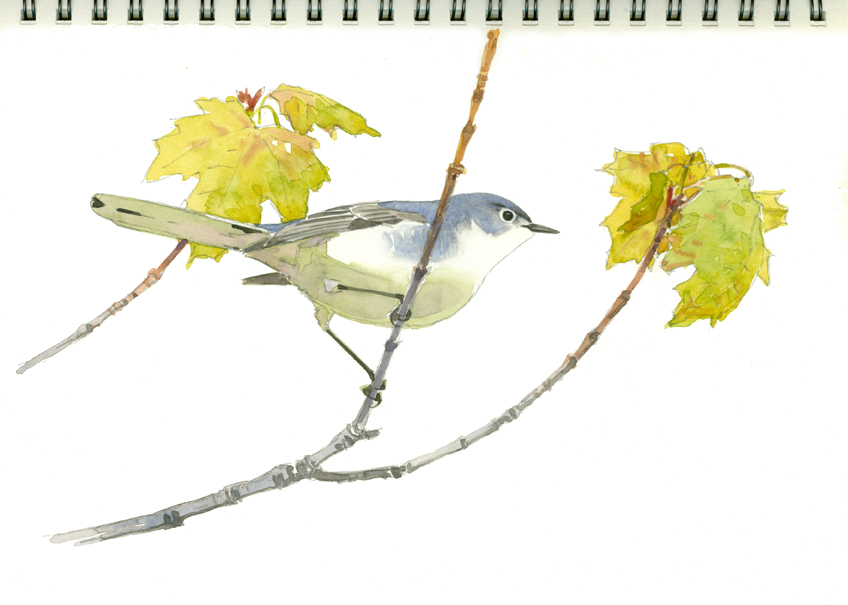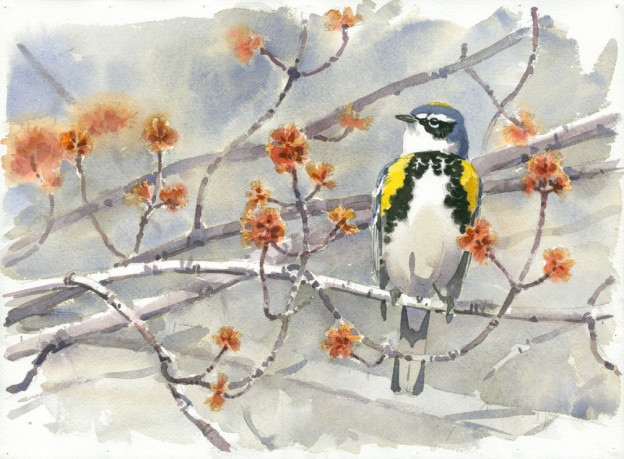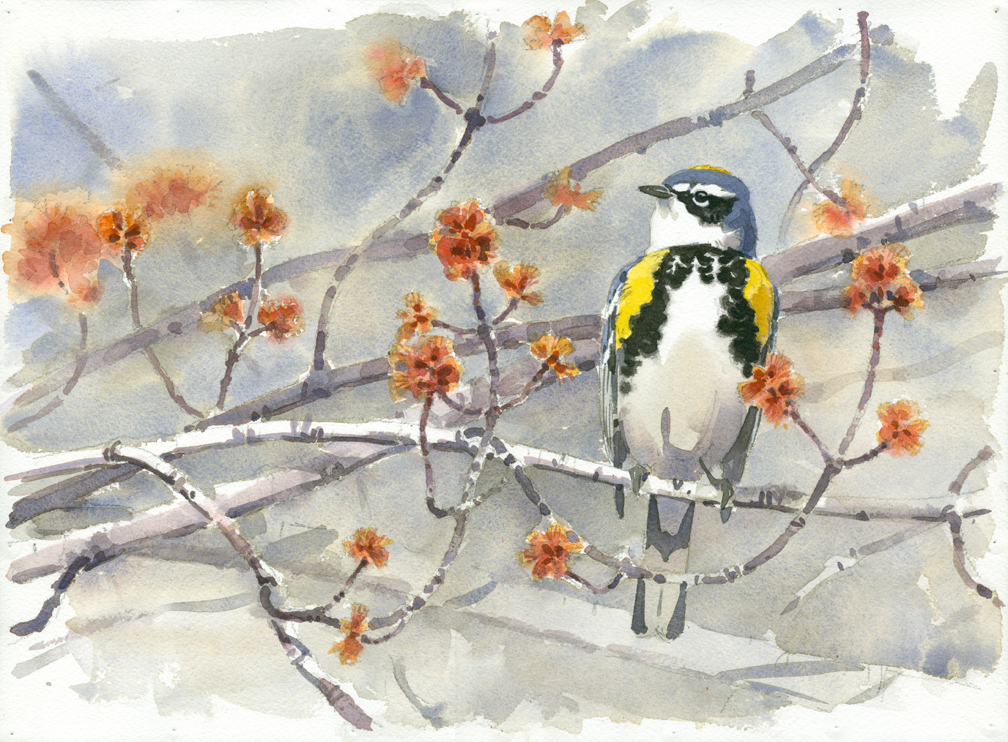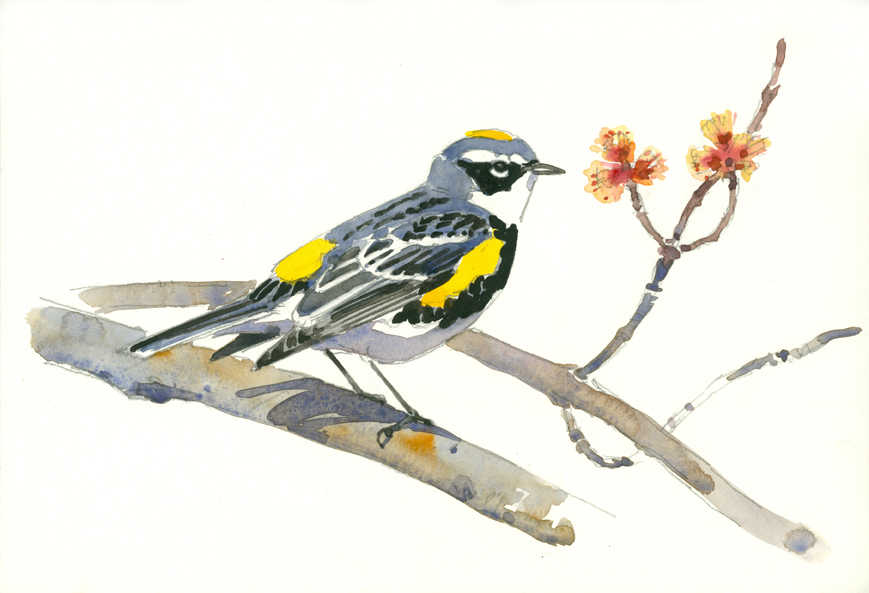This is from a series of posts by MABA resident artist Barry Van Dusen
Graves Farm Wildlife Sanctuary, Williamsburg on June 27, 2015
I was intrigued to read on the Graves Farm Wildlife Sanctuary trail map that the coldwater streams on the property support wild brook trout (Salvelinus fontinalis), and I decided that my first task would be to check out Nonnie Day Brook and see if I could spy any of these elusive and beautiful fish. The water was unseasonably low when I arrived at the brook (a result of a very dry month of May), but the habitat looked entirely suitable to native trout, so I walked up and down the banks, scanning the pools and riffles with my binoculars at close focus.
I observed a number of black-nosed dace (Rhinichthys atratulus), but no brookies. The cool, clear waters flowed around moss-covered rocks and over areas of golden gravel and sand, and my mind wandered back to other places where I’d seen wild brook trout. Along a roadside ditch in the White Mountains of New Hampshire, I once watched adult brook trout less than 3 inches long in water less than 4 inches deep! And, in the Blue Ridge Mountains of Virginia I once watched schools of brookies in bright spawning colors gathering in the pools of a tumbling mountain stream.
In low-water or warm water conditions, these fish seek out deeper pools or underwater springs that provide the temperature and oxygen levels they need, so I was not surprised to find them absent from the brook under the current conditions. Dissapointing… but then I reconsidered – I’m an artist, and I can paint my own vision of a Nonnie Day brook trout, whether I had seen one or not! I made some notes on the streambed habitat and took some photos. Back in my studio, I gathered up brook trout references I’d gathered in the past and painted my own vision of a Nonnie Day Brook Trout!
There are some VERY impressive trees in the forest around Nonnie Day Brook. One huge old white pine was particularly awe-inspiring. I spent some time walking around the massive trunk and gazing up at its vast height. Photographs just don’t convey the scale of this behemoth, but here’s one anyway…
Later, I wandered across Adams Road into the big hayfield – not yet mowed. It was filled with red-winged blackbirds and tree swallows, who perched cooperatively on orange-painted wooden stakes while I drew them.
Further west, where Joe Wright Brook passes under the road, a Green Heron also posed for me while I made more sketches…


